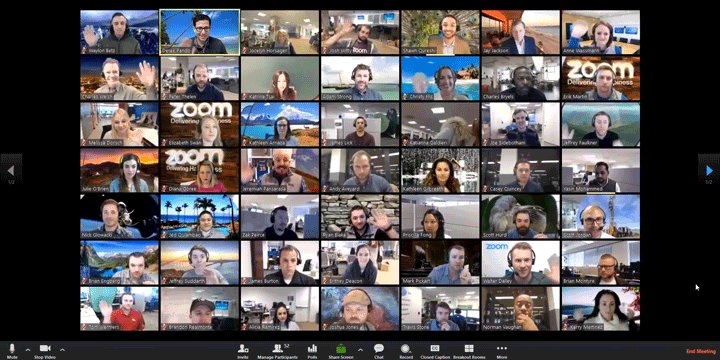Not with robots,
with real people!
Want a chat about a job? Pick our brains? Or just have a beer coffee with the team?


In the days when corona was just the name of a pale lager, Skype was seen as the go-to platform for professional e-meetings. However, instead of taking advantage of the ‘once in a blue moon’ opportunity to market their video calling platform, Skype seemed to take a back seat and let Zoom and Microsoft Teams take the reins during the pandemic. We investigate the reasons why this might have happened…
For nearly 2 decades Skype had been the de-facto app for video calling, however this started to change a few years after Microsoft first acquired the brand in May 2011. They launched multiple redesigns of the app, presumably to make it compete with other messaging apps like WhatsApp, and they created their own version of emojis and other features that were borrowed from Snapchat. Many saw this as a sign of the developers losing their way and shifting their focus away from the core functionality of the video calling service. What’s more, the messy transition from peer-to-peer (P2P) technology to cloud-powered services in 2013 resulted in additional problems with the user interface, such as the repeated delivery of notifications to users.
In November 2016, Microsoft launched Teams and began to put a lot of energy into integrating video calls into the platform – which perhaps should have been the first signal that Skype was no longer a priority for the technology giant! So while Skype started to stagnate, and in some ways even regress (with its average app store rating falling from 3.5 to 1.5 stars in June 2017), apps like Zoom were starting to add relevant features to their platforms and improve the quality of their calls.
During the pandemic, Zoom benefited from being free to download and from being more reliable than its competitors – making it the new norm for both regular and corporate video calls. Many businesses found that their clients already had Zoom installed, and those that didn’t had no problem connecting to the browser version of the platform.
So Skype went from being the first thing you think of when considering video calling, to the app that missed out on the biggest opportunity to promote its product in our lifetime. However, in Microsoft’s view it achieved its goal of purchasing Skype when it was a trendy, niche company and integrating its video conferencing technology into its own Teams product.
Skype will soon complete its transition from early noughties software hero to zero – when it will completely disappear from our lives in July 2021. Anyone wanting to make a business video call using Microsoft products will have to use Teams instead. The Skype ship has well and truly sailed.
Want a chat about a job? Pick our brains? Or just have a beer coffee with the team?
Fancy a chat?
hello@bornagency.co.uk
01522 612676
Middletons Yard
7 Potter St
Worksop
S80 2FT
Directions